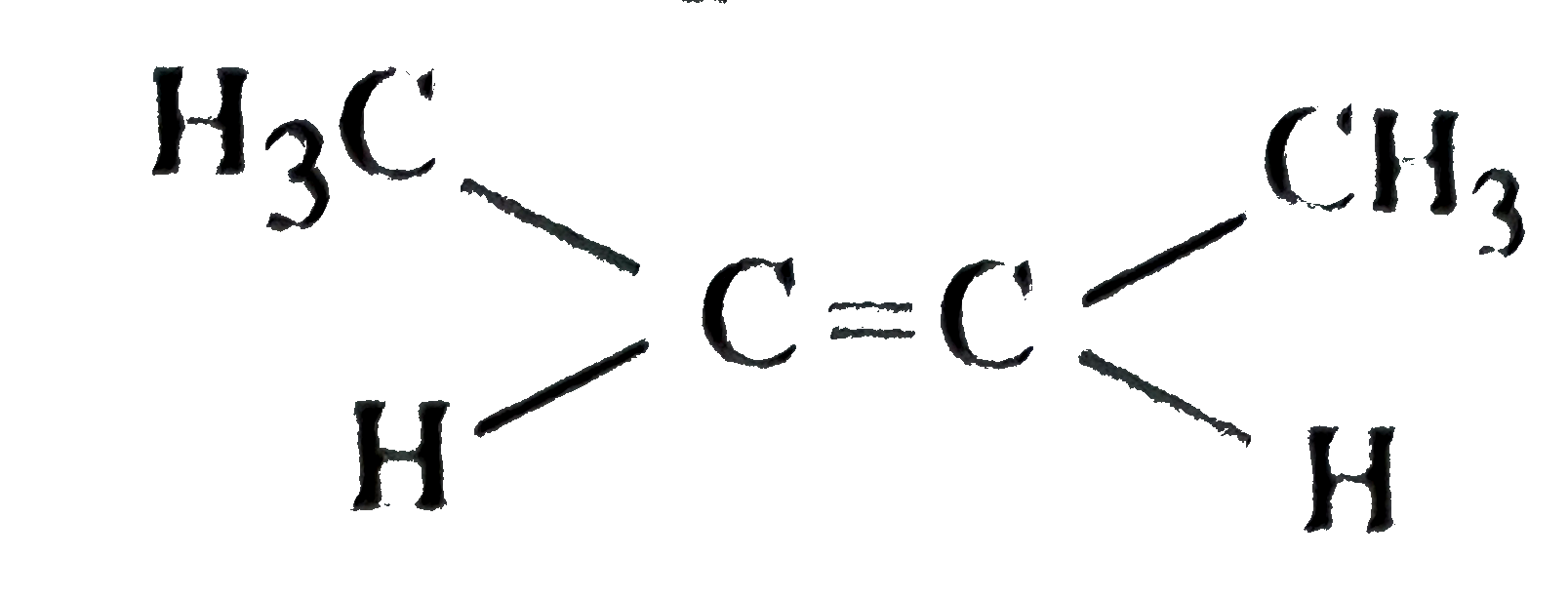A and B, respectively, are
A
A is cis while B is trans-2-butene
B
A is trans while B is cis-2-butene
C
A and B both are trans-2-butene
D
A and B both are cis-2-butene
Video Solution
Text Solution
The correct Answer is:A
gives cis alkune while Na in liquid (Birch reduciton) gives trans alkene.
|
Updated on:21/07/2023
Topper's Solved these Questions
Similar Questions
Knowledge Check
- Question 1 - Select One
Catalytic hydrogenation involves addition of hydrogen to a C=Cor−C≡C−bond in presence of a metal catalyst such as Ni, Pt, Pd, etc. These are called heterogeneous catalysts. Both H2 and alkene/alkyne get adsorbed on the surface of the metal , and syn-addition of hydrogen atoms takes place. The relative rates of hydrogenation follows the order:
−C≡C−>>C=C<>C=o<C6H6
If sodium or lithium in liquid ammonia is used, anti-addition of H-atoms occurs across −C≡C−bond. These reducing agents can also be used to reduce double bonds of benzene rings and conjugated dienes but not of isolated dienes.
[A]Lindlar's←−−−−CatalystCH3−C≡C−CH3 Na in−−−−→liq.NH3[B]
[A] and [ B] are respectivelyAcis, trans-2-buteneBboth trans-2-buteneCtrans,cis-2-buteneDboth cis-2-butene - Question 2 - Select One
AH2/Lindlar's catalyst←−−−−−−−−−−−−CH3C≡CCH3Na/Liq NH3−−−−−−−−→B A and B, respectively, are
ACis, trans-2-buteneBBoth trans-2-buteneCTrans, cis-2-buteneDBoth cis-2-butene - Question 3 - Select One
H3C−C≡C−CH3Na/Liq.NH3−−−−−−−−→X In the above reaction X is
AH3C−CH2−CH2−CH3B C
C DBoth (B) and (C )
DBoth (B) and (C )
ACu←−−ΔCH3CH2OHAl2O3−−−→ΔB.
A and B respectively are :View SolutionACu←−−ΔCH3CH2OHAl2O3−−−→ΔB.
A and B respectively are :View SolutionPh−CH2−CH2−C≡C−CH3Na/NH3−−−−−→Cl2/hv−−−→
View SolutionCH3CH2−C−H+CH3−C=ChNa,NH3(l)→
View SolutionBLindlar−−−−→R−C≡C−RNa/liq.NH3−−−−−−−→A.
A and B are geometrica isomers (R−CH=CH−R)View Solution

